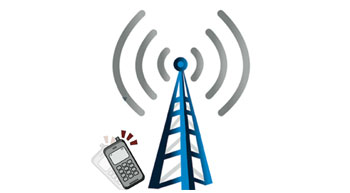Though spectrum in the 700 MHz band remains unsold, a few operators believe that demand for spectrum will remain healthy in the future as telecom companies beef up their services.
Weeks after the most expensive spectrum offered in auction by the Union Government of India – the 700 MHz spectrum – went unsold, state-run utility BSNL offered some solace to the Union Telecom Department by approaching it for airwaves in the premium band in order to bolster its 4G services.
However, the telecom public sector undertaking (PSU) has sought a 5 MHz block in the 700 MHz band to be assigned to it through the equity route.
The 700 MHz band was put up for sale for the first time, at a base price of `11,485 crore for each MHz, but remained unsold, with voices in the telecom sector even terming the entire auction as a failure for the government to raise huge revenue streams that were anticipated. The government is believed to have received several representations from industry asking it to rationalise the ¨unrealistically¨ high pricing of the premium spectrum.
The CMD of BSNL Anupam Shrivastava reportedly said that the PSU did not possess the right 4G spectrum that could give it coverage, although it had some 4G spectrum that gives it capacity. He added that the 700 MHz spectrum combined with the 2,500 MHz band it already possesses would provide it the necessary synergies to roll out 4G services across the country. ¨The 700 MHz offers clear advantages such as ´good coverage´ with lesser number of base stations,¨ Shrivastava is reported to have stated.
However, this would still mean no cash for the government as BSNL has sought spectrum to be assigned to it in lieu of raising the government´s equity in the PSU. ¨We are proposing that the 700 MHz spectrum comes to us, and in lieu of that, the paid-up equity of the government may increase to that extent in BSNL,¨ Shrivastava was quoted as saying.
Like the BSNL chief, Rajan S Mathews, Director General, Cellular Operators Association of India (COAI), is also very upbeat about the spectrum auction outcomes, than many others in the telecom domain.
¨It´s a very positive outlook. Nobody puts in $10 billion in investments if they are not serious about the future of the industry. All of the major operators have by virtue of their bids indicated that, one, they are serious about the market because it´s a 20-year license, and, therefore, they intend to continue to make investments into networks as well,¨ he tells INFRASTRUCTURE TODAY.
He further notes, ¨People got focused on the 700 MHz band. That became the tail that started wagging the dog. If you look at the whole spectrum auction, the amount of money that was supposed to come, 60 per cent of the total projected proceeds were supposed to come from there. The other number that got into the headline, unfortunately, was the assumption that if all other spectrum got sold, then Rs.5 lakh crore, or whatever the number, would be there. But everybody knew that 100 per cent of the spectrum wouldn´t get picked up. And certainly because of the pricing on the 700 MHz, it would not be attractive for the operators. If you take out all these anomalies, the results are very encouraging both in terms of optimism of operators in the industry and what customers can expect.¨
Matthews is confident about further spectrum sales being offered to meet the demand that will be raised by consumers and says, ¨The spectrum that is acquired is probably good for two to three years. As people require higher speeds, we expect the demand for spectrum to grow as that is the only major network we have in India.¨



Leave a Reply
You must be logged in to post a comment.